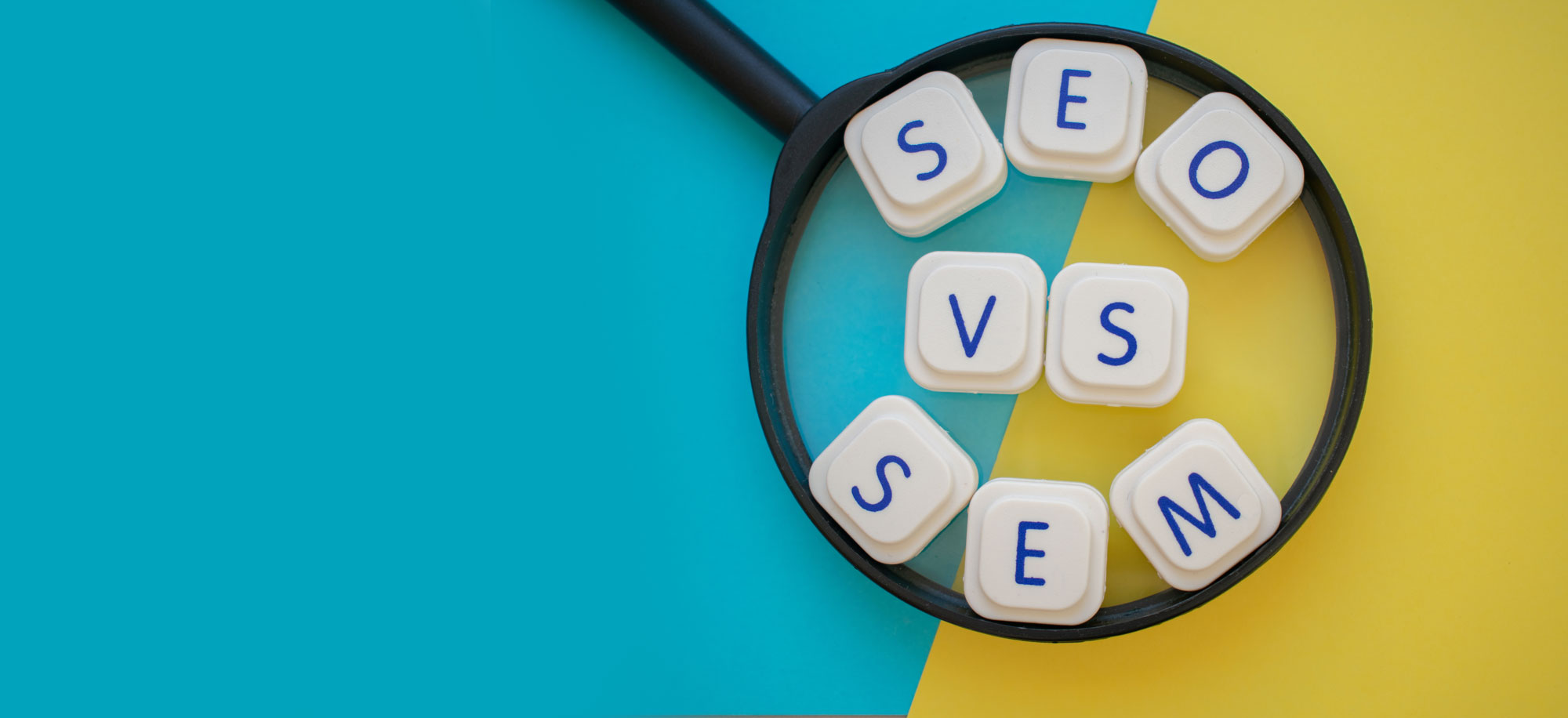Having a website to serve as a business’ digital headquarters has become essential.. No matter if you’re proficient in social media, email marketing, text messages and more, you always want to ensure you are bringing new and existing customers back to your website to take action.
While many people understand the business case for a website, something that many don’t consider is that building a website doesn’t end after the design and development phase. In fact, that’s only the beginning. You want to ensure you are developing your website with your SEO (search engine optimization) and SEM (search engine marketing) goals in mind.
SEO and SEM are two of the largest drivers of website traffic. Consider this, Facebook and Google are the two largest digital media and marketing platforms currently available. And this has been true for decades. Because of this, much of your website traffic will undeniably come from one or both of these companies.
While Facebook is its own challenge, SEO and SEM are particularly focused on improving how your website shows up to people who are searching on Google or its adjacent platforms like YouTube and Gmail, and other search engines on a smaller scale .
You may have heard the terms SEO and SEM in conversations before and may think they are the same thing. Although these two marketing efforts are similar, they vary slightly in overall scope.
SEO
Search Engine Optimization, SEO for short, is the process of optimizing elements of your website to be recognized by search engines like Google and ranked highly by those search engines for search terms that relate to your business. For example, if you own a plumbing business in Boise, Idaho then you’d want to optimize your website to show up in the first or second page of results when someone searches “best plumbers in Boise.”
SEO focuses on how your site and site’s content is organized. There’s no one rule to SEO, but when Google or any other search engine wants to archive your site, they must start by “crawling” for the most important information on your site. How you’ve approached the structure of text headers, image alt text, keywords within your stories and more all have a large impact on your SEO ranking. This SEO ranking determines when and where your content will show up to people who are searching for similar phrases or terms that may be connected to your content. SEO also is impacted by your site speed, if your website is mobile friendly and much more.
Because SEO can be daunting, always work with professionals or use SEO resources such as Yoast SEO to help self-guide your work.
SEM
Search Engine Marketing offers a more direct path to helping relevant potential customers find your business. While it uses the same fundamentals (search, keywords, etc), SEM is directly focused on helping you increase your visibility on search engines through paid efforts. Let’s say you’re a florist in Charlotte, North Carolina looking to expand operations across the state into South Carolina. With SEM, you could pay for premium space to be one of the first businesses people in NC and SC see when they type “florist near me” or “flower shop”. You can target your SEM campaigns based on keywords, location, demographics and more. With SEM, you’re able to purchase space on a cost-per-click (CPC) or cost-per-thousand-impressions (CPM) basis. One focuses on how many clicks you’ll get and the other focuses on how many people you’ll reach with your ad overall.
While SEO and SEM are different in practice, understanding the structure of your content will help you with having these tools work together. For example, if you’re writing a blog post on flowers and you’ve taken the current SEO steps, you could then use those keywords and some of the copy from the blog post as guidance for your SEM ads. This ensures what you’re creating and amplifying are seamlessly connected and you’re reaching the right people at the right time.


